Volume 7, Issue 4
Displaying 1-6 of 6 articles from this issue
- |<
- <
- 1
- >
- >|
Research Paper
-
2016 Volume 7 Issue 4 Pages 115-120
Published: 2016
Released on J-STAGE: November 09, 2016
Download PDF (1192K) -
2016 Volume 7 Issue 4 Pages 121-126
Published: 2016
Released on J-STAGE: November 18, 2016
Download PDF (1226K) -
2016 Volume 7 Issue 4 Pages 127-134
Published: 2016
Released on J-STAGE: November 28, 2016
Download PDF (1897K)
Technical Paper
-
2016 Volume 7 Issue 4 Pages 135-141
Published: 2016
Released on J-STAGE: November 28, 2016
Download PDF (1351K)
Research Paper
-
2016 Volume 7 Issue 4 Pages 143-151
Published: 2016
Released on J-STAGE: December 27, 2016
Download PDF (1084K)
Technical Paper
-
2016 Volume 7 Issue 4 Pages 153-159
Published: 2016
Released on J-STAGE: December 29, 2016
Download PDF (1228K)
- |<
- <
- 1
- >
- >|
